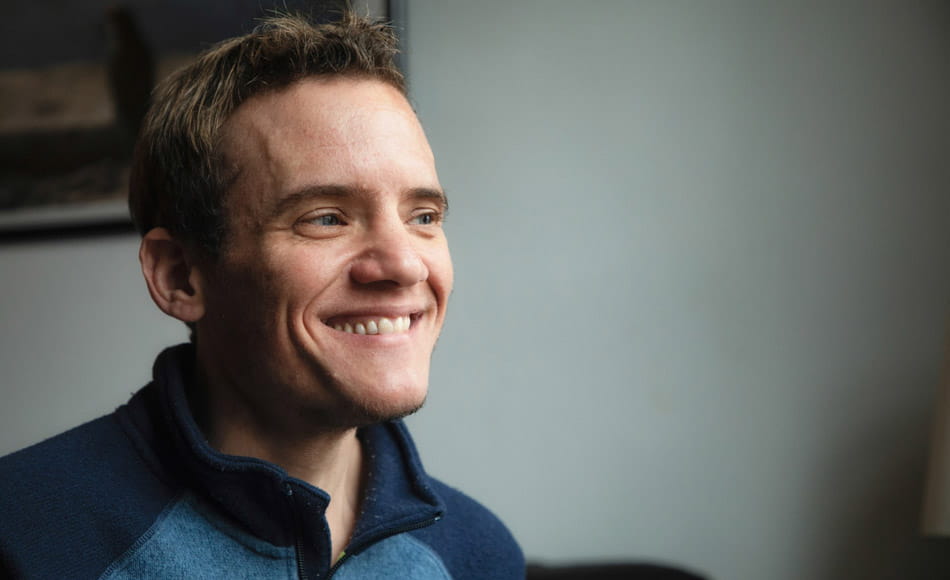Prostate Cancer
Radiation therapy called brachytherapy can be used to treat prostate cancer. It entails injecting tiny, rice-grain-sized radioactive seeds into the prostate gland. These seeds minimize radiation exposure to surrounding healthy tissue while providing a high dose of radiation to the malignant cells. Men with early-stage prostate cancer frequently choose brachytherapy as a treatment since it is both highly successful and less intrusive. Brachytherapy might cause adverse effects, much like all other cancer treatments. The probable side effects of brachytherapy for prostate cancer will be discussed in this article, along with management strategies.

Side effects of brachytherapy
Radiation therapy in general is often associated with side effects. These side effects are well known and most side effects do not depend on the type of radiation therapy. However, brachytherapy is associated with sparing surrounding healthy tissue from unnecessary radiation with the potential for fewer side effects than alternatives such as external beam radiotherapy.
People respond to treatments in different ways. The type of side effects that may be experienced depends on a number of factors such as the stage of prostate cancer and whether there are any compounding health problems. The majority of brachytherapy patients receive a multimodality treatment with other treatments such as surgery, external beam radiation therapy (EBRT), and androgen deprivation therapy (ADT). This makes it very difficult to distinguish between side effects from brachytherapy, side effects caused by other treatments, and disease-related symptoms and complications.
Prostate Cancer Treatment Options
There are several treatment options available for prostate cancer, including surgery, radiation therapy, hormone therapy and watchful waiting or active surveillance. The choice of treatment depends on the stage of the cancer, the patient's age and health status and other factors such as the patient's personal preferences.
Surgery
Surgery involves removing the prostate gland and any cancerous tissue surrounding it. This is a large procedure and involves all the risk factors of typical surgery. However, this is a good option if your tumor is localized and has not spread beyond the prostate gland. In such cases, surgery can be curative and eradicate cancer. However, surgery may also have side effects, such as urinary incontinence and erectile dysfunction, which can have a significant impact on a man's quality of life. In some cases, nerve-sparing techniques can be used to minimize the risk of these side effects but this depends on the individual case and the surgeon's experience.
External beam radiation therapy
External Beam Radiation therapy is another treatment option for prostate cancer. This type of radiation therapy uses high-energy rays to kill cancer cells, but the radiation is delivered from outside the body using a machine. This option means that the radiation, while precisely targeted to the prostate gland, may reach healthy cells and can cause other side effects such as fatigue, skin irritation, and bladder or bowel problems. However, modern radiation therapy techniques, such as intensity-modulated radiation therapy (IMRT) and image-guided radiation therapy (IGRT), can minimize exposure to healthy tissue and reduce the risk of side effects. Radiation therapy may also be combined with hormone therapy to increase its effectiveness.
Hormonal therapy
Hormonal therapy is a type of treatment for prostate cancer that involves lowering the levels of male hormones, such as testosterone, which can fuel the growth of prostate cancer. This treatment can slow down or even stop the growth of prostate cancer cells, but it is not a cure for the disease. Hormone therapy can be used in combination with other treatments, such as surgery or radiation therapy, to make them more effective. However, hormone therapy can have side effects, including hot flashes, loss of bone density, and erectile dysfunction. In some cases, hormone therapy may also increase the risk of heart disease.
Active surveillance
Watchful waiting or active surveillance is a treatment approach for prostate cancer that involves closely monitoring the prostate cancer without immediately treating it. This approach is typically recommended for men with low-risk prostate cancer, as some prostate cancers grow slowly and may not require immediate treatment.
With watchful waiting or active surveillance, regular check-ups, such as prostate-specific antigen (PSA) blood tests and digital rectal exams (DREs), are performed to monitor the cancer's growth and detect any changes. If prostate cancer begins to grow or spread, treatment options can be considered at that time.
Watchful waiting or active surveillance is a good option for men who are older, have other health conditions, or have concerns about the potential side effects of other treatments.
Brachytherapy Treatment
With brachytherapy, small radioactive pellets are placed directly into the prostate gland using thin needles. The radiation from the pellets targets the cancer cells and destroys them while minimizing exposure to surrounding healthy tissue.
Brachytherapy can be performed as either a permanent implant, where the pellets remain in place or as a temporary implant, where the pellets are removed after a specific period of time.
This type of treatment is typically recommended for men with early-stage prostate cancer that is localized to the prostate gland. Brachytherapy is a minimally invasive procedure and may have fewer side effects than other treatments, such as surgery or external beam radiation therapy.
Low dose rate brachytherapy
Low-dose rate (LDR) brachytherapy is a form of radiation therapy used to treat prostate cancer. During LDR brachytherapy, small radioactive pellets, or seeds, are permanently implanted into the prostate gland under ultrasound guidance.
The radioactive seeds emit a low dose of radiation over a period of several weeks or months, gradually killing the cancer cells in the prostate gland while minimizing exposure to surrounding healthy tissue. The seeds remain in the prostate gland permanently but become inactive over time, eventually losing their radioactivity.
LDR brachytherapy is usually performed on an outpatient basis and typically takes less than one hour to complete. The patient is placed under anaesthesia, and the seeds are implanted into the prostate gland through thin, hollow needles. After the procedure, the patient may experience some mild discomfort or urinary symptoms, but these typically resolve within a few weeks.
LDR brachytherapy is an effective treatment option for localized prostate cancer, with outcomes similar to those seen with surgery or external beam radiation therapy. It is typically recommended for patients with low-risk or intermediate-risk prostate cancer. Like all forms of radiation therapy, LDR brachytherapy can cause side effects including urinary and bowel problems, but these side effects are usually temporary and can be managed with medication or other treatments.
High-dose rate brachytherapy
High-dose rate (HDR) brachytherapy is a form of radiation therapy used to treat prostate cancer. Unlike low-dose rate (LDR) brachytherapy, where small radioactive pellets, or seeds, are permanently implanted in the prostate gland, HDR brachytherapy involves temporarily placing a small, highly radioactive source into the prostate gland for a short period of time.
During HDR brachytherapy, a series of thin plastic tubes, or catheters, are placed into the prostate gland through the perineum (the area between the scrotum and anus) under local anaesthesia. A high dose of radiation is then delivered to the prostate gland through the catheters for a short period of time, typically less than 30 minutes. After the radiation is delivered, the catheters are removed.
HDR brachytherapy is usually delivered in several treatment sessions, with each session lasting only a few minutes. The entire course of treatment is typically completed within a few days. HDR brachytherapy can be used as a standalone treatment or in combination with other forms of radiation therapy, such as external beam radiation therapy.
HDR brachytherapy is an effective treatment option for localized prostate cancer, with outcomes similar to those seen with LDR brachytherapy and external beam radiation therapy. Like all forms of radiation therapy, HDR brachytherapy can cause side effects, including urinary and bowel problems, but these side effects are usually temporary and can be managed with medication or other treatments.
Combination of treatments
In some cases, a combination of options may be used to treat prostate cancer. It's important for men with prostate cancer to discuss their treatment options with their doctor and weigh the benefits and risks of each option.

Short-term (acute) side effects
Immediately after the brachytherapy procedure, you may experience some of the following:2
- Soreness or localized bruising around the perineum (the area between the scrotum and anus where the needles are inserted to deliver the brachytherapy).
- Blood in urine and/or semen.
- Discomfort when passing urine (may include needing to pass urine urgently or frequently).
- These short-term side effects are typically mild in nature and usually resolve soon after treatment.
Advantages of Brachytherapy for Prostate Cancer
Brachytherapy is a treatment option for prostate cancer that offers several advantages over other treatments. Here are some of the key advantages:
- Minimally invasive: Brachytherapy is a minimally invasive procedure that involves placing small radioactive pellets directly into the prostate gland. This means there is no surgical incision and recovery time is typically shorter than with surgery.
- Precise targeting: The radiation from the pellets in brachytherapy is precisely targeted to the prostate gland, minimizing exposure to surrounding healthy tissue. This can reduce the risk of side effects, such as urinary incontinence and erectile dysfunction.
- High success rate: Brachytherapy has a high success rate in treating localized prostate cancer. According to the American Society for Radiation Oncology, the five-year survival rate for men with low-risk prostate cancer treated with brachytherapy is approximately 95%1.
- Fewer treatment sessions: Brachytherapy can be completed in just one or two treatment sessions, compared to several weeks of daily external beam radiation therapy.
- Outpatient procedure: Brachytherapy is typically performed on an outpatient basis, meaning patients can go home the same day as the procedure.

Long-term side effects
Possible long-term side effects of brachytherapy include:3
- Urinary discomfort (may include needing to pass urine urgently or frequently, or finding it difficult to pass urine).
- Bowel discomfort.
- Erectile dysfunction.
People respond to treatments in different ways and you may or may not experience some of these side effects. Importantly, the long-term risks are generally lower with brachytherapy compared to other treatment options for prostate cancer.4
Furthermore, even if you are affected by some of these side effects, many patients find that their urinary, bowel and sexual function returns to normal after 6-12 months.
FAQs
Brachytherapy is typically recommended for patients with low- or intermediate-risk prostate cancer who have a life expectancy of at least 10 years and are in good overall health. Patients with high-risk prostate cancer may require additional treatment, such as external beam radiation therapy or hormone therapy.
The recovery period after brachytherapy for prostate cancer can vary from patient to patient. In general, patients may experience some discomfort or pain in the pelvic area for a few days after the procedure. You may also experience some urinary symptoms, such as a frequent need to urinate or burning during urination. Your doctor may prescribe medication to help manage these symptoms.
It's important to rest and avoid strenuous activity during the first few days after the procedure to allow your body to heal. You may need to take some time off work or other activities, depending on your individual recovery time and your doctor's recommendations.
In general, most patients can return to normal activities within a few days to a week after the procedure. However, you may need to avoid activities that put pressure on the pelvic area, such as heavy lifting or strenuous exercise, for a few weeks after the procedure.
It's important to follow your doctor's instructions carefully during the recovery period, and to attend all follow-up appointments to monitor your progress and ensure that the treatment was successful.
After brachytherapy for prostate cancer, you will need to be closely monitored by your doctor to ensure that the treatment was successful and to detect any potential complications. The frequency of monitoring will depend on several factors, including the stage and aggressiveness of your cancer, your overall health, and your doctor's recommendations.
In general, you can expect to have regular follow-up appointments with your doctor every few months after the treatment. These appointments may involve physical exams, blood tests, and imaging tests such as ultrasound or MRI to check for any signs of cancer recurrence or other issues.
Your doctor may also monitor your PSA (prostate-specific antigen) levels, as an increase in PSA levels can be a sign of cancer recurrence. The frequency of PSA testing will depend on your individual case and your doctor's recommendations.
It's important to attend all scheduled follow-up appointments and to report any new symptoms or concerns to your doctor. Regular monitoring can help ensure that any potential issues are detected early and treated promptly, improving your chances of a successful outcome.

Safety of radiation
A common question about brachytherapy is whether the procedure causes any radiation risks to family and friends.
If high dose rate (HDR) brachytherapy is used, the radiation sources are only temporarily placed in the body and are removed after each treatment. Hence, there is no radiation risk to family or friends.
If low dose rate (LDR) brachytherapy (seed therapy) is used, only the seeds give out radiation and these will not make you radioactive. The radiation levels given out by the seeds are low, however, your healthcare professional may advise you to avoid close contact with small children and pregnant women after the brachytherapy procedure.


